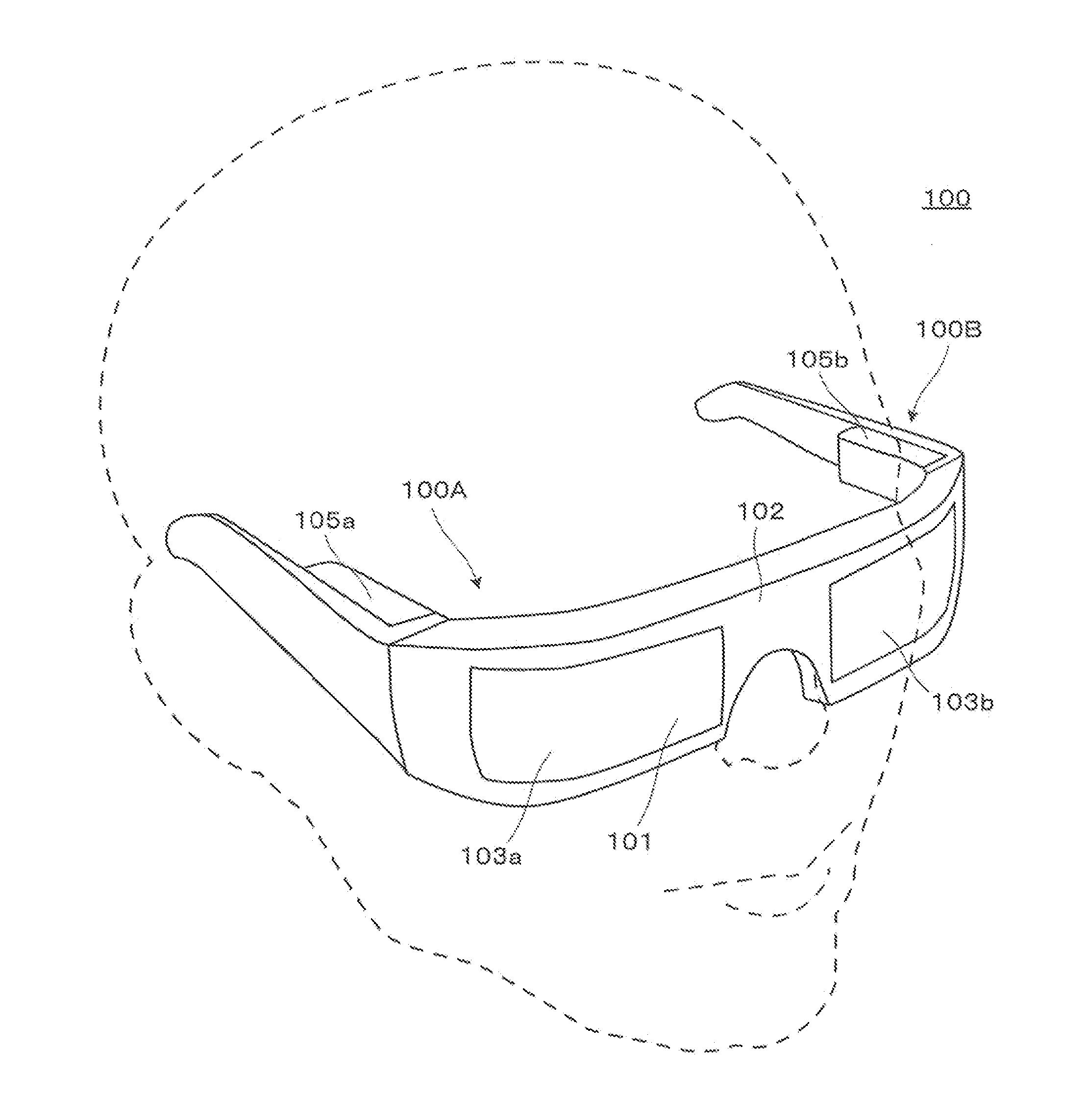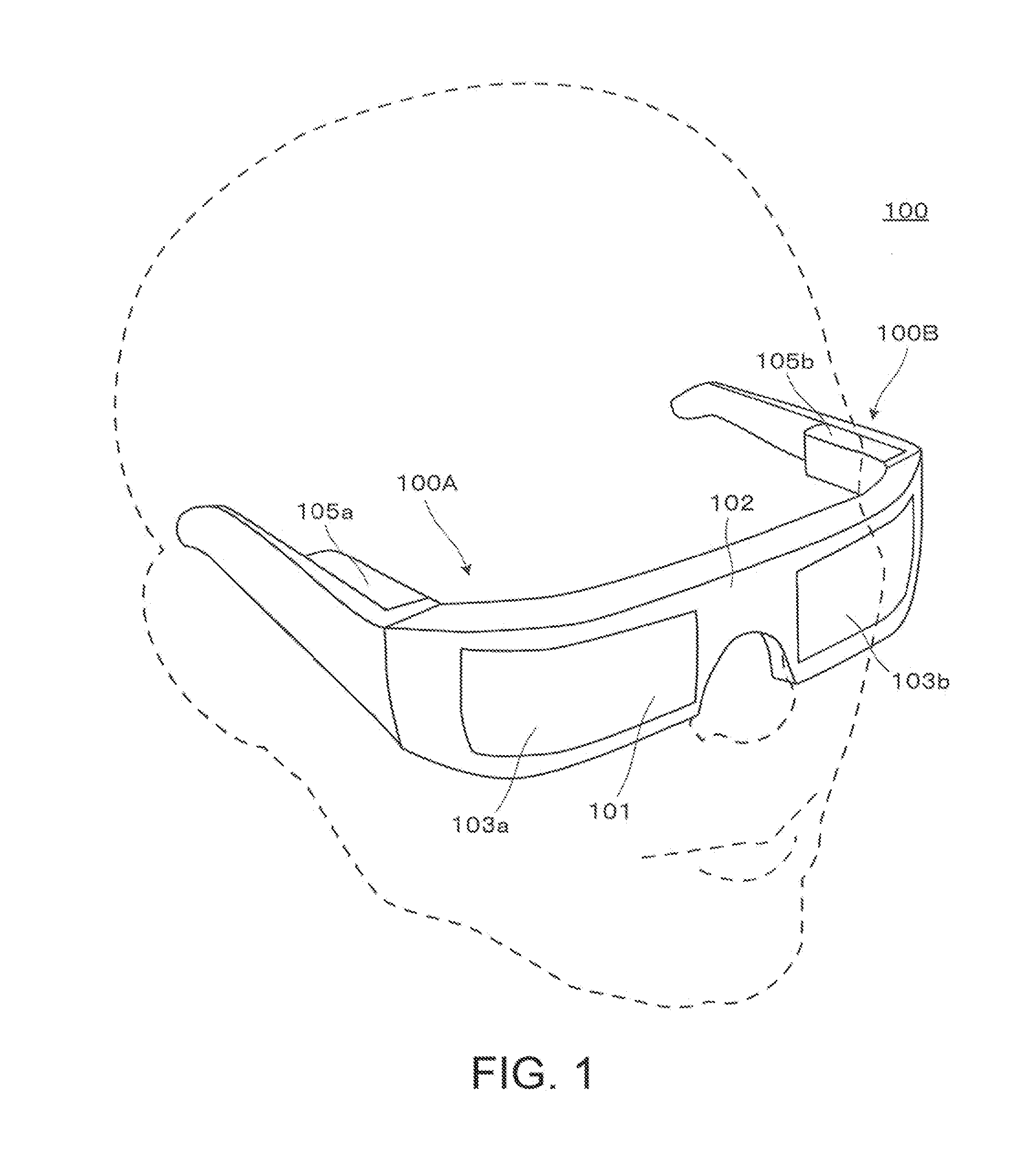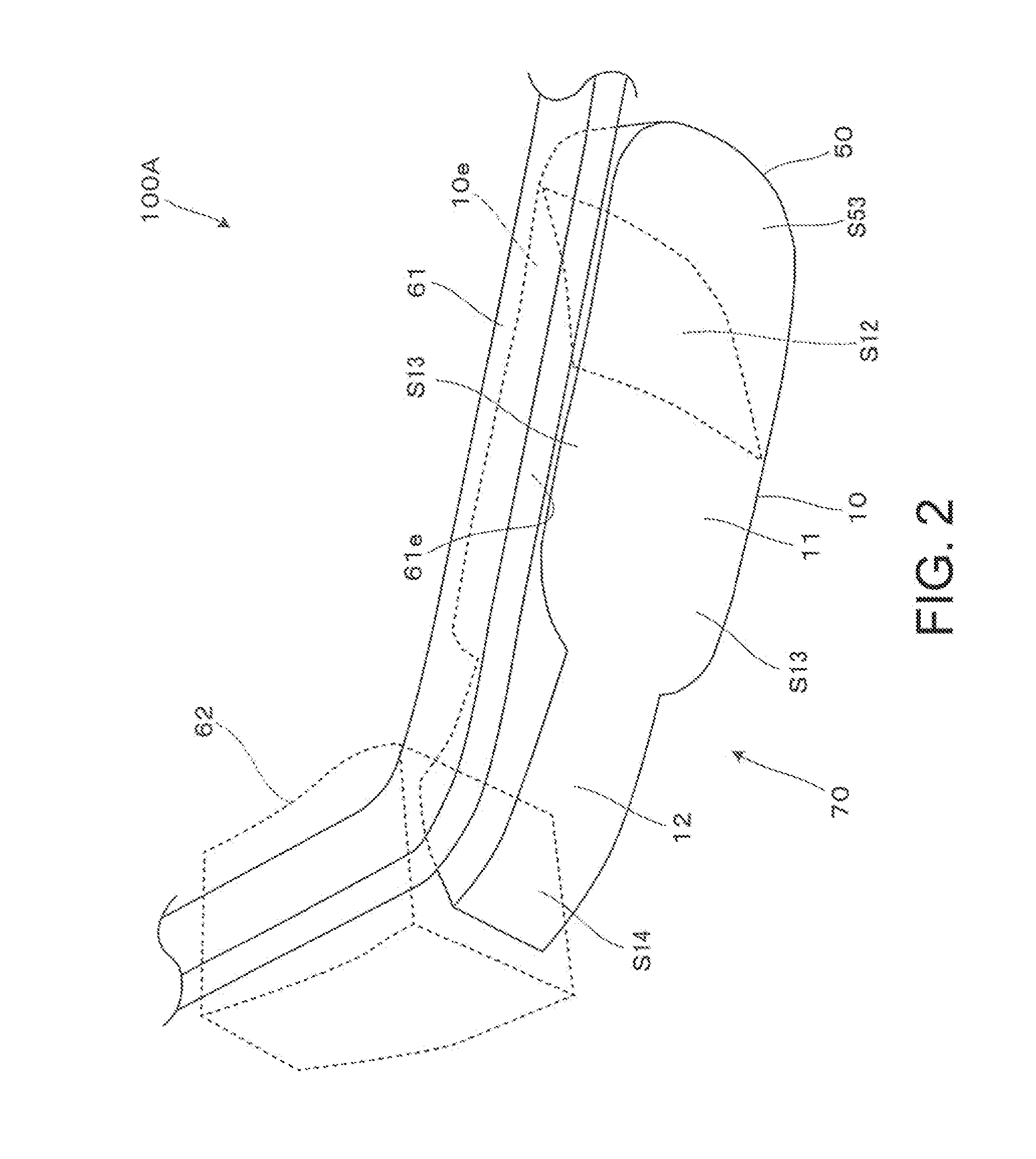Virtual image display device
a virtual image and display device technology, applied in the field of virtual image display devices, can solve the problems of system thickness as a whole, difficulty in reducing size and weight, and inability to see the outside state of the observer, so as to achieve wide angle of view, minimize size and weight, and high function performance
- Summary
- Abstract
- Description
- Claims
- Application Information
AI Technical Summary
Benefits of technology
Problems solved by technology
Method used
Image
Examples
application examples
[0111]Hereafter, an application example of a projection fluoroscope that is incorporated in a virtual image display device according to the invention will be described. The symbols used in each application example are summarized as follows.
SPH: pupil
FFSk: free-curved surface (k in the prism=surface number)
ASPk: Axisymmetric aspherical surface (k in the projection optical system=surface number)
SPH: spherical surface or plane (protective glass surface)
R: radius of curvature
T: axial surface distance
Nd: refractive index with respect to the line d of the optical material
Vd: Abbe number with respect to the line d of the optical material
TLY: inclination angle (°) of the optical axis in a cross-section surface (XZ section) in a specific surface (There is a case where the TLY varies at the front and back of the specific surface)
DCX: amount of shift of the optical axis in an X axis direction in a cross-section surface (XZ cross-section) in a specific surface.
application example 1
[0112]Data for optical surface that configures the prism and the projection lens of the projection fluoroscope in the application example 1 is shown in Table 1 below. Moreover, for example, FFS 1 means the first surface S11, FFS2 means the second surface S12, and FFS3 means the third surface S13. In addition, ASP1 means the emitting surface of the first lens of the projection lenses, and ASP2 means the incident surface of the first lens.
TABLE 1NoTypeRTNdVd1SPH∞22.002FFS1−98.4345.501.52555.953FFS2−42.793−5.501.52555.954FFS1−98.4349.001.52555.955FFS3−107.434−9.001.52555.956FFS1−98.4346.001.52555.957FFS4−104.477−6.001.52555.958FFS530.142−2.009ASP1−11.550−2.591.52555.9510ASP27.019−0.5011ASP35.809−1.001.58529.9012ASP424.036−12.5913ASP5−15.474−4.001.52555.9514ASP6150.859−4.5115SPH∞−1.601.45867.8216imagesurface
[0113]Regarding the optical surface of the prism that configures the application example 1, the inclination angle (tilt) TLY of the optical axis in the cross-section surface thereof,...
application example 2
[0121]Data for optical surface that configures the prism and the projection lens of the projection fluoroscope in the application example 2 is shown in Table 5 below.
TABLE 5NoTypeRTNdVd1SPH∞22.002FFS1−40.8895.001.52555.953FFS2−31.073−5.001.52555.954FFS1−40.8899.001.52555.955FFS3−42.593−9.001.52555.956FFS1−40.8896.001.52555.957FFS4−122.593−6.001.52555.958FFS5−26.417−2.009ASP1−5.981−4.501.52555.9510ASP27.011−0.8011ASP35.091−1.001.58529.9012ASP436.142−13.3213ASP5−9.304−4.001.52555.9514ASP6−23.176−13.8915SPH∞−1.441.45867.8216imagesurface
[0122]Regarding the optical surface of the prism that configures the application example 2, the inclination angle (tilt) TLY of the optical axis in the cross-section surface thereof, and the amount of shift (de-centered) DCX of the optical axis is shown in Table 6 described below.
TABLE 6NoTypeTLY (front) DCX (back)TLY (back)2FFS10003FFS2−24.5024.54FFS10005FFS30006FFS1032.5081.07FFS4−42.00−42.08FFS5000
[0123]Regarding each optical surface of the prism that...
PUM
 Login to View More
Login to View More Abstract
Description
Claims
Application Information
 Login to View More
Login to View More - R&D
- Intellectual Property
- Life Sciences
- Materials
- Tech Scout
- Unparalleled Data Quality
- Higher Quality Content
- 60% Fewer Hallucinations
Browse by: Latest US Patents, China's latest patents, Technical Efficacy Thesaurus, Application Domain, Technology Topic, Popular Technical Reports.
© 2025 PatSnap. All rights reserved.Legal|Privacy policy|Modern Slavery Act Transparency Statement|Sitemap|About US| Contact US: help@patsnap.com



